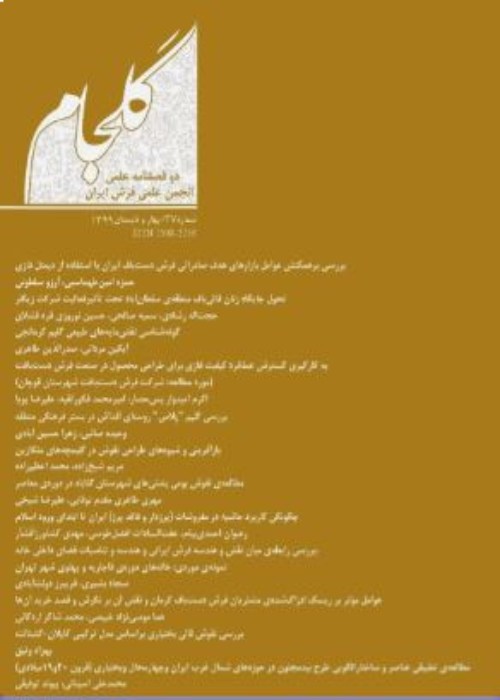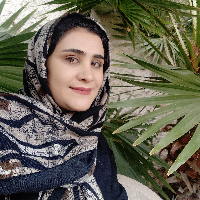An analysis of the kilim designs of Koohdasht city and the factors affecting their emergence
Kilim handicrafts are common women's craftworks in some nomadic and rural areas of Iran. These handicrafts have various textures and patterns in different parts of the country, which in some parts are representative of the culture of that region. One of the common arts in Lorestan province is kilim weaving, using traditional patterns that have undergone various changes over time. Some of the prominent features of this art in this region ar symmetry, variety, abstraction, and graphicity of the designs. The designs of Lorestan kilims have been indicants of the people's beliefs, convictions and traditions which have been passed down from generation to generation, for many years. The main purpose of this study is to investigate the patterns of Lorestan kilim and the effective factors of their emergence. The main purpose of this study is to study the most important designs used on the carpets of Kuhdasht city with the influence of the culture of the people of the region and also the effective factors in their emergence. The main questions of this research are posed as follows; How many types of hand-woven kilims are in this region? And which factor has been effective in the emergence of Lorestan kilim's patterns and designs? The research method of this study is descriptive-analytical. Data collection method of the study is library and field. This study deals with qualitative analysis of the studied samples. The results of this study indicate that the patterns woven in Lorestan kilims are as following: Ritual and mythological motifs (cypress, the tree of life (pine) along with chamois, the Mother Goddess, mountain), animal and bird motifs (chamois, horse, rooster, duck), motifs of banquets and mourning ceremonies (dance), plant motifs and motifs derived from religious beliefs (patterns of the Howz). It can also be said that most of the designs used in these handicrafts have been continually inspired by the designs of Lorestan bronze up to this day.
- حق عضویت دریافتی صرف حمایت از نشریات عضو و نگهداری، تکمیل و توسعه مگیران میشود.
- پرداخت حق اشتراک و دانلود مقالات اجازه بازنشر آن در سایر رسانههای چاپی و دیجیتال را به کاربر نمیدهد.



